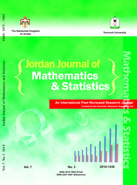Numerical Approximation of Lambert W Function for Real Values by Unique Method of Quadratic Approximation
Keywords:
Lambert W Function; Natural Logarithm; Quadratic Approximation; Real Number.Abstract
This paper introduces a novel method for the numerical approximation of the Lambert W function, W(x) = y, in the real domain. By linearly approximating the natural logarithm, the function is transformed into a quadratic equation whose roots refine the initial approximation. Iterative solving of this equation yields high precision, with iterations determined by the desired accuracy. Two methods for positive x are proposed, the first expresses the function as (z1 + a1) ln(z1 + a1) = x, iteratively refining the approximation of z, where z1, is the initial approximation and a1<<z1, while the second method is based on ln(y1 + a1) + y1 + a1 =ln(x), where y1 is the initial approximation, and a1<<y1. For x between 0 and 1/e, the method is extended to approximate W(-x) =-y. Unlike Newton or Halley’s methods, this approach handles both branches without constraints on initial assumptions, covering a broad range of values.
Extensive examples and a software algorithm validate the method’s accuracy, offering a precise and flexible tool for numerical analysis.
Keywords: Lambert W Function; Natural Logarithm; Quadratic Approximation; Real Number.
2010 Mathematics Subject Classification. 26A25; 26A35

